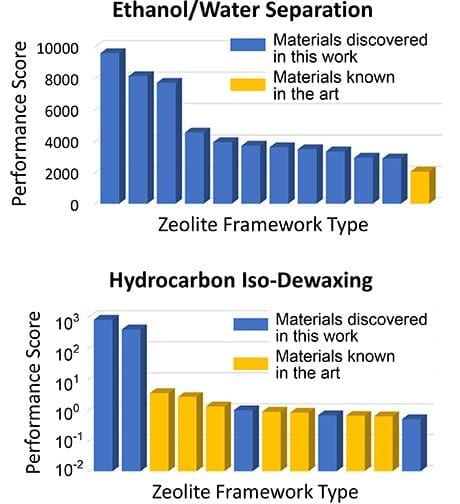
Photo Credit: College of Science and Engineering
Discovery could lead to major efficiencies and cost savings
Using one of the largest supercomputers in the world, a team of researchers led by the University of Minnesota has identified potential materials that could improve the production of ethanol and petroleum products. The discovery could lead to major efficiencies and cost savings in these industries.
The University of Minnesota has two patents pending on the research and hopes to license these technologies. The study was published in the research journal Nature Communications.
Petrochemical and biofuel refineries use materials called zeolites that act as molecular sieves to sort, filter, and trap chemical compounds, as well as catalyze chemical reactions necessary to produce and upgrade fuel and chemical feedstock from petroleum-based and renewable resources. There are more than 200 known zeolites and hundreds of thousands predicted zeolite variations. The key to improving biofuel and petrochemical processes is to find which zeolites work best.
Unfortunately, synthesizing novel zeolites in the lab is a long, complicated process that can take many months each. To analyze all the known and predicted structures would take decades. Instead, researchers from the University of Minnesota and Rice University developed a complex computational screening process that can look at thousands of zeolites in the virtual world and identify their performance for specific applications. This reduces the need for trial and error experimentation in the lab.
“Using a supercomputer at Argonne National Laboratory, we are able to use our computer simulations to compress decades of research in the lab into a total of about a day’s worth of computing,” said lead researcher Ilja Siepmann, a University of Minnesota chemistry professor and director of the U.S. Department of Energy-funded Nanoporous Materials Genome Center based in Minnesota.
Read more: Researchers identify materials to improve biofuel and petroleum processing
The Latest on: Mengla virus
[google_news title=”” keyword=”Mengla virus” num_posts=”10″ blurb_length=”0″ show_thumb=”left”]
via Google News
The Latest on: Mengla virus
- Scientists use gut bacteria to prevent mosquito-borne diseaseson April 23, 2024 at 5:47 am
Chinese scientists have developed a more natural strategy to prevent mosquito-borne diseases by changing insects gut microbes which might be used as ...
- Chinese scientists use gut bacteria to prevent mosquito-borne diseaseson April 19, 2024 at 11:40 am
Chinese scientists have developed a more natural strategy to prevent mosquito-borne diseases by changing insects' gut microbes, which might be used as an alternative to controversial experiments that ...
- China Focus: Scientists use gut bacteria to prevent mosquito-borne diseaseson April 19, 2024 at 5:36 am
BEIJING, April 19 (Xinhua) -- Chinese scientists have developed a more natural strategy to prevent mosquito-borne diseases by changing insects' gut microbes, which might be used as an alternative to ...
via Bing News










